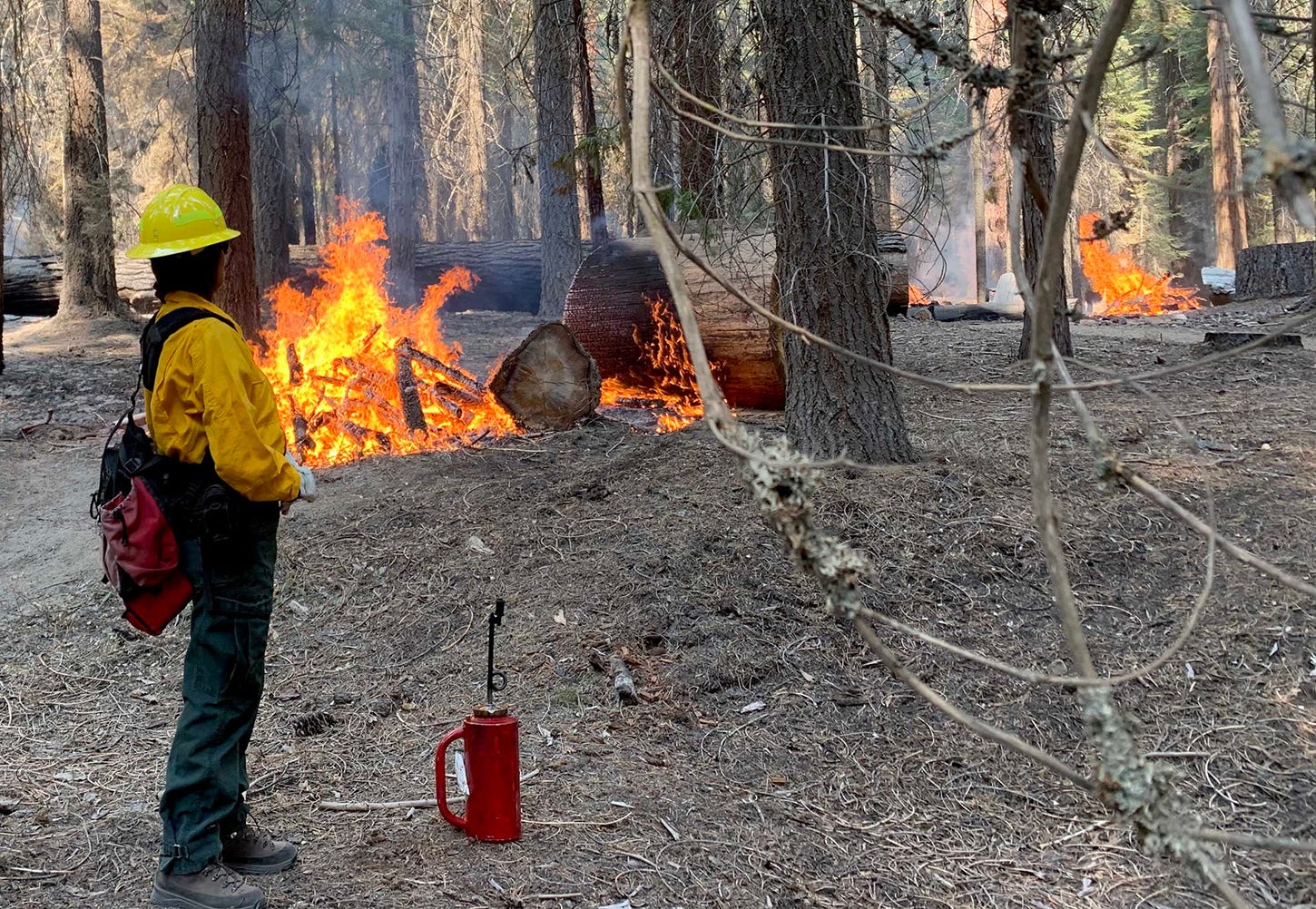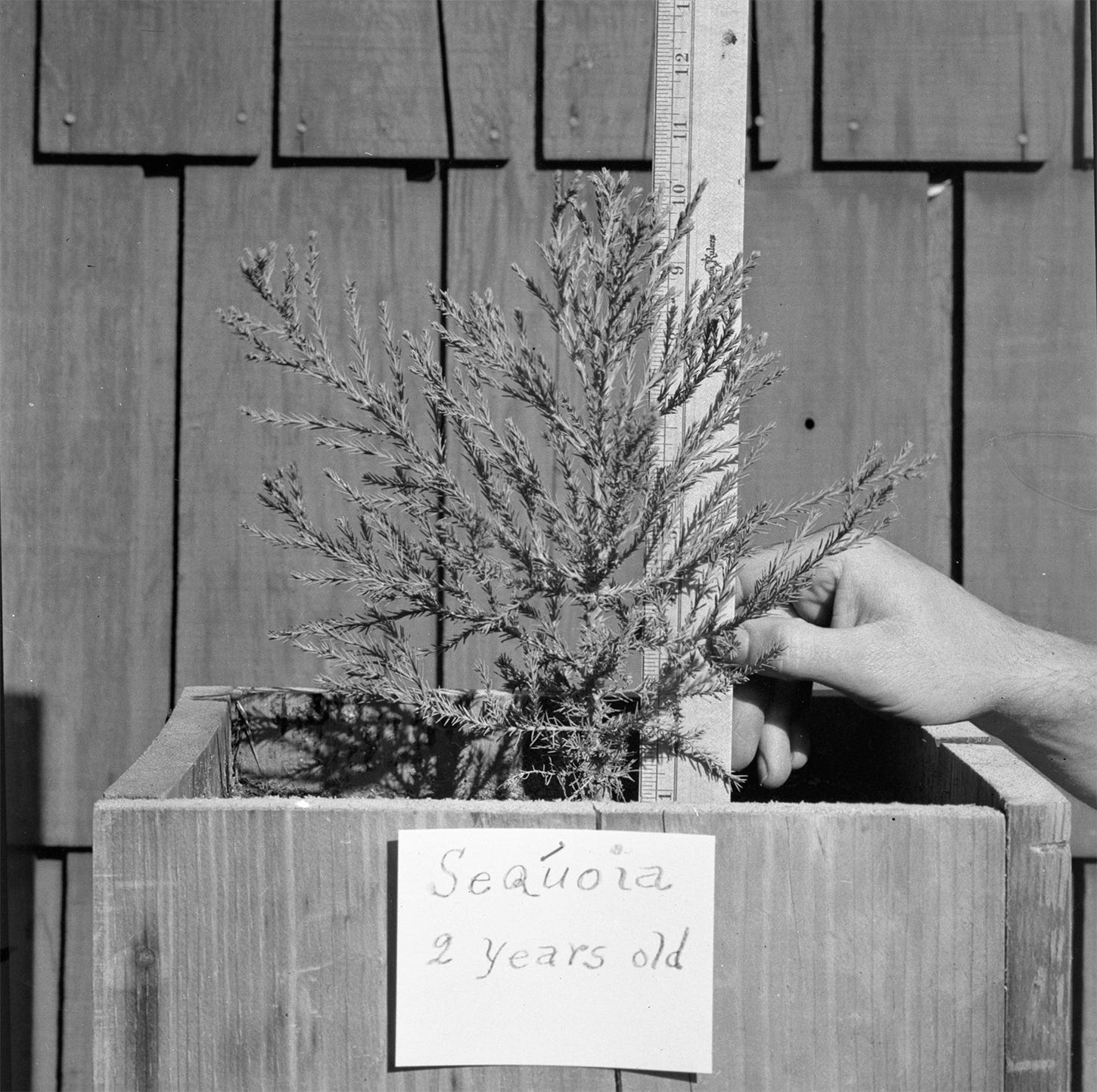Volume 2, Number 28 - Monday, Nov. 13, 2023
Published twice a week, on Monday and Thursday
Perspective
JOHN BUCKLEY is executive director of the Central Sierra Environmental Resource Center. Last week, he presented a webinar sponsored by the Sierra Club Tahoe Area Group titled: “Why are Sierra Nevada Forests in Crisis? What Can Activists Do?”
Buckley has been a Forest Service firefighter and a Sierra Club member. His presentation, which includes his slides and commentary on the state of Sierra forests, trends in forest management, threats, and things activists can do to promote better forest management practices, can be watched HERE.
I haven’t met Buckley, but a Google search shows that he has found himself at odds with some in the environmental community.
In July 2014, for instance, he told SFGate (HERE) that he supported the Forest Service’s plan to harvest dead trees on Stanislaus National Forest and another plan to harvest hazard trees.
"Californians are going to use wood," said John Buckley, director of the Central Sierra Environmental Resources Center, a science-based environmental group that works with the Forest Service on ecosystem preservation issues. "Do you want Californians to use wood that is already dead and will rot if you don't use it, or do you want to go out into the forest and cut living trees for wood?"
But, the reporter noted at the time, the Forest Service’s proposal “sparked an angry response from environmentalists who say salvage logging disrupts the development of a complex post-fire ecosystem that is crucial to reforestation.” Here’s another excerpt from that article:
"There is nothing one could think of that would be more destructive after a fire than salvage logging and planting," said Chad Hanson, a forest and fire ecologist for the John Muir Protect, a nonprofit offshoot of Earth Island Institute. Post-fire habitat "is the single most biodiverse forest habitat type in the conifer forests of the Sierra Nevada."
In 2022, Buckley was critical of an opinion piece by Hanson that was published in the Fresno Bee HERE. Hanson claimed that University of California researchers omitted key evidence in a study published in March 2022 (HERE). He was responding to another Fresno Bee article (HERE) that suggested that about 80% of the trees in the Sierra Nevada needed to go.
Buckley (HERE) called Hanson’s claims “misinformation” and said:
It is time to stop attacking credible scientists who point to the need to restore broad areas of public forests to the open and park-like conditions (with scattered patches and clumps of trees) that historically dominated Sierra Nevada forests. In the northern Yosemite region, the full range of forest stakeholders (from loggers to environmentalists) support the Forest Service using all the tools in the toolbox to deal with decades of fuel build-up that creates extreme burn conditions. There are middleground solutions, and science-based selective thinning of forests is one of the appropriate tools.
In his webinar presentation last week, Buckley suggested ways that “activists can support balanced and positive forest treatments while opposing negative public forest projects.” Among those — “submit comments for projects with solutions rather than just objections.” (You can watch the webinar HERE.
Why I’m ‘pausing’ this newsletter until 2024
In recent weeks, I’ve been frustrated that Giant Sequoia News isn’t doing the job I intended.
My conclusion is that I need more help or more time.
One way to achieve what I hope here may be to establish a network of informed people throughout the Sierra Nevada, which will take some time.
So, I’ve decided to “pause” this newsletter for that purpose.
In addition to outreach, during this time, I’ll be updating the Giant Sequoia News website, which languished while I focused on the newsletter.
The newsletter will return on New Year’s Day. Paid subscribers will be credited with the “missing issues” and extended subscriptions (although I don’t know yet exactly how Substack will handle this).
I don’t expect any major news related to giant sequoias between now and the end of the year. The Giant Sequoia Lands Coalition doesn’t plan a media event in December this year and will issue its annual report in January. The government may or may not shut down. Burning will continue as conditions allow. We may see a repeat of last year’s weather (or not). At any rate, I’ll report the latest on Jan. 1, and hopefully, my efforts will deserve your continuing readership and support.

The nation’s Christmas Tree
Since April 28, 1926, the General Grant Tree has been known as the nation’s Christmas Tree. On Oct. 1, 1949, Sanger, California, was recognized by the Post Office Department as the Nation’s Christmas Tree City. Congress established the General Grant Tree as a national shrine on March 29, 1956.
Since then, even when a public event has not been possible, the National Park Service places a wreath at the tree's base.
This year’s event is planned for 2:30 p.m. on Dec. 10. The Sanger Chamber of Commerce has arranged a chartered bus to make traveling from the San Joaquin Valley community to the General Grant Tree easier. Tickets are $125 and include a brunch. For reservations, call 559-875-4575 or send email to: sangerchamber@gmail.com.
Wildfire, water & weather update
Cooler temperatures with rain and snow at higher elevations are in the forecast this week. The best Sierra Nevada weather forecasts are at NWS Hanford, HERE, and NWS Sacramento, HERE.
Wildfire update: Prescribed burning, including pile burning, continues at many locations in the Sierra Nevada, as weather and other conditions allow. If you check out the WatchDuty map HERE you’ll see a string of green flame icons where prescribed burning is reportedly underway.
As of this morning, there was no word from Calaveras Big Trees State Park as to when the long-awaited South Grove prescribed burn might be able to begin. Work has been postponed due to recent wet weather — and more is on the way.

Did you know you can comment here?
It’s easy to comment on items in this newsletter. Just scroll down, and you’ll find a comment box. You’re invited to join the conversation!
Historic photo of the week

Thanks for reading!





TLDR;). Then why are even our “managed” forests burning? Why are some fires worse in these areas?
https://www.ilovetrees.net/mariposa-grove-fire/
In my area, the Creek Fire started near Big Creek in an area that was “restored” by the FS after a fire in the 90s. The weather leading up to & during the fire was a multi-weeklong stretch of very high temperatures & very low humidity which never happened 30,50, 100 years ago. How can we “restore” our forests to a less dense state when our current climate resembles nothing like the cooler temps & lower carbon levels in the atmosphere & when trees sequester carbon? Could the extreme dry & hot weather be why the fire created fire tornado’s & a massive crown fire in a “managed” area? Why did some of the higher elevation unmanaged, dense areas have a more productive fire & survive? If we combat climate change & reduce extreme weather events it’s likely we will have productive fires & a “restored” forest density of the past but cutting, thinking & more chemicals to reduce shrubs actually puts MORE carbon into the atmosphere & is putting the cart before the horse. Reduce our extreme weather by reducing carbon & we reduce our extreme fires
Thanks for all the posts on a very important issue. Much appreciated!!! One thing I rarely if ever see is on the notion of Buckley saying we need to restore the forests to a historical less dense state is the fact that our planet was cooler back then & we have significantly higher carbon levels in our atmosphere today which with less trees sequestering carbon will continue to rise. It’s like we are the frog in a pot of boiling water & we are arguing over adding salt instead of oil so it doesn’t boil over when we should be turning off the gas. We need to deal with our climate & it’s issues in our present state and reduce carbon if we ever hope to have less severe fire. Going in and aggressively cutting trees with a carbon intense process as “mitigation” doesn’t come close to addressing the core issues.
But regardless of everyone’s political bias I encourage people to get out there & see things for yourself, think critically & form sound conclusions even if they go against our own bias. I live near the McKinley grove & I used to be more in favor of management in stark contrast to the Sierra Club ideology however I have seen with my own eyes the destruction of our forests due to the heavy handed FS practices. Boggs mountain was touted as a perfectly managed area by Cal Fire but it had a 90-99% mortality fire recently. I have zero affiliation with the below site but I’ve seen similar things first hand which has helped me form a more educated view, even if it goes against my political bias. I’m curious how others see things but the “mitigation” side does benefit from the millions in funds where the Sierra Club has no monetary motive.
https://www.ilovetrees.net/mariposa-grove-fire/